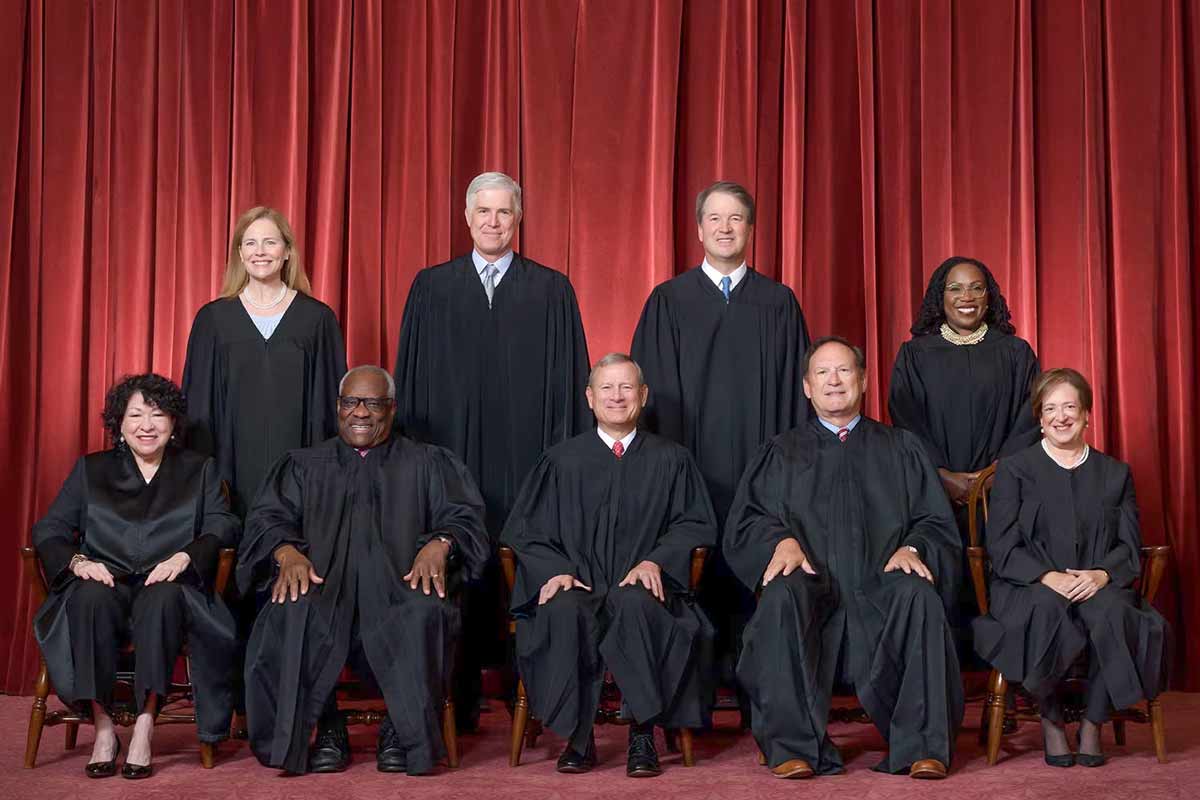National News
Supreme Court Issues Unexpected Redistricting Decisions

By Mary Alice Miller
In a stunning rebuke to a novel Republican interpretation of the U.S. Constitution’s enumeration of state powers regarding federal elections, this week the Supreme Court of the United States (SCOTUS) rejected a claim from the North Carolina GOP-dominated legislature that would have allowed state legislatures almost unrestricted power over the structure of federal election rules, including the drawing of congressional lines.
In Moore vs. Harper, the North Carolina GOP relied on the “independent state legislature theory” which holds that extreme partisan voting maps and violations of voter protections in state constitutions are exempt from scrutiny in state courts. The theory is an extreme interpretation of the Elections Clause which states “The Times, Places, and Manner of holding Elections for Senators and Representatives, shall be prescribed in each State by the Legislature thereof; but the Congress may at any time by Law make or alter such Regulations, except as to the Places of Choosing Senators.”
But in a 6-3 decision, SCOTUS rejected that claim, finding that judicial review of state legislative district maps is permissible. If the Court had let the theory stand, extreme partisans who have gerrymandered district lines in favor of the GOP (despite the majority of voters registered as Democrats) could have thrown next year’s presidential elections into chaos.
The Elections Clause does not limit election rule decisions solely to state legislatures and Congress. New York State is among 21 states that created a bipartisan/non-partisan-type Redistricting Commission appointed to draw electoral district lines independent of state legislatures. Prior to New York’s Independent Redistricting Commission coming into effect in 2020, the state legislature drew federal and state district lines, historically in collaboration with an advisory commission.
In 2022, New York State’s Independent Redistricting Commission could not reach a consensus regarding state and federal district lines, therefore the legislature stepped in and created its own maps. Those lines were challenged, and in response, the Court of Appeals appointed a Special Master to redraw district lines. Among other changes, those lines would have placed Reps. Yvette Clarke and Hakeem Jeffries in the same district, as had happened with Reps. Carolyn Maloney and Jerry Nadler. Pushback from the public and good government groups moderated the extreme lines drawn by the Republican Special Master. Not satisfied with the result which in part led to New York losing 4 Democratic congressional seats, a group of NY voters brought a lawsuit seeking to compel the redistricting commission to submit new proposed congressional lines, stating the commission never finished its work. NYS Attorney General Letitia James and Governor Kathy Hochul filed a joint friend-of-the-court brief in support of the redistricting commission being ordered to fulfill its mandate to draw new lines.
“Our state’s Constitution makes clear that an independent body, with participation from the general public, is charged with drawing maps for Congressional districts. Relying on a process with no accountability and with limited time for public input is not how we engage the public and ensure their interests are addressed throughout this process,” said New York State Attorney General Letitia James. “I am committed to ensuring our electoral process is as transparent as possible and that we follow the process outlined in our Constitution. New Yorkers deserve free and fair elections, and to have a say in how their communities will be represented in Congress.”
In a statement Attorney General James and Governor Hochul asserted that while the Special Master’s maps may have been appropriate for the 2022 Election, there is time for the Independent Redistricting Commission to generate new maps and follow the process outlined in the New York State Constitution for Congressional maps going forward.
None of these decisions which spurred ongoing public interest and robust debate would be able to occur if SCOTUS agreed with the “independent state legislature theory” that disallows state judicial review of legislative electoral actions, especially if those actions violate state law. To the contrary, Chief Justice Roberts wrote in his decision “The Elections Clause does not insulate state legislatures from the ordinary exercise of state judicial review… A state legislature may not ‘create congressional districts independently of’ requirements imposed ‘by the state constitution with the respect to the enactment of laws.”
After the Voting Rights Act was gutted, only Section 2 remained as a protection of minority voting rights. Section 2 states that electoral district lines cannot be drawn in a manner that would “improperly dilute minorities’ voting power by denying “members of the electorate to participate in the political process and elect representatives of their choice.” The SCOTUS decision will likely result in an additional Democrat seat in Congress.
Both of these cases are notable because Chief Justice John Roberts wrote the majority opinion that gutted the Voting Rights Act in Shelby County v. Holder in 2013 by invalidating Section 5 which required “pre-clearance” with federal officials of changes to new election laws in states that had a history of disenfranchising Black voters.













